- Home
- Andy McNab
Aggressor
Aggressor Read online
Table of Contents
Cover
Copyright
About the Author
Also by Andy McNab
Aggressor
Part One
Chapter 1
Chapter 2
Chapter 3
Chapter 4
Chapter 5
Chapter 6
Chapter 7
Chapter 8
Chapter 9
Chapter 10
Part Two
Chapter 1
Chapter 2
Chapter 3
Chapter 4
Chapter 5
Part Three
Chapter 1
Chapter 2
Chapter 3
Chapter 4
Chapter 5
Part Four
Chapter 1
Chapter 2
Chapter 3
Chapter 4
Chapter 5
Chapter 6
Chapter 7
Chapter 8
Part Five
Chapter 1
Chapter 2
Chapter 3
Chapter 4
Chapter 5
Part Six
Chapter 1
Chapter 2
Chapter 3
Chapter 4
Chapter 5
Chapter 6
Chapter 7
Chapter 8
Chapter 9
Part Seven
Chapter 1
Chapter 2
Chapter 3
Chapter 4
Chapter 5
Chapter 6
Chapter 7
Chapter 8
Part Eight
Chapter 1
Chapter 2
Chapter 3
Chapter 4
Chapter 5
Chapter 6
Chapter 7
Chapter 8
Chapter 9
Part Nine
Chapter 1
Chapter 2
Chapter 3
Chapter 4
Chapter 5
Chapter 6
Chapter 7
Chapter 8
Chapter 9
Part Ten
Chapter 1
Chapter 2
Chapter 3
Chapter 4
Chapter 5
Chapter 6
Chapter 7
Chapter 8
Part Eleven
Chapter 1
Chapter 2
Chapter 3
Chapter 4
Chapter 5
Chapter 6
Chapter 7
Chapter 8
Chapter 9
Chapter 10
Chapter 11
Epilogue
This eBook is copyright material and must not be copied, reproduced, transferred, distributed, leased, licensed or publicly performed or used in any way except as specifically permitted in writing by the publishers, as allowed under the terms and conditions under which it was purchased or as strictly permitted by applicable copyright law. Any unauthorised distribution or use of this text may be a direct infringement of the author’s and publisher’s rights and those responsible may be liable in law accordingly.
Epub ISBN: 9781407039299
Version 1.0
www.randomhouse.co.uk
AGGRESSOR
A CORGI BOOK : 0552150207
9780552150200
Originally published in Great Britain by Bantam Press, a division of Transworld Publishers
PRINTING HISTORY
Bantam Press edition published 2005
Corgi edition published 2006
1 3 5 7 9 10 8 6 4 2
Copyright © Andy McNab 2005
The right of Andy McNab to be identified as the author of this work has been asserted in accordance with sections 77 and 78 of the Copyright Designs and Patents Act 1988.
All the characters in this book are fictitious, and any resemblance to actual persons, living or dead, is purely coincidental.
Condition of Sale
This book is sold subject to the condition that it shall not, by way of trade or otherwise, be lent, re-sold, hired out or otherwise circulated in any form of binding or cover other than that in which it is published and without a similar condition including this condition being imposed on the subsequent purchaser.
Set in 11/12pt Palatino by Falcon Oast Graphic Art Ltd.
Corgi Books are published by Transworld Publishers,
61–63 Uxbridge Road, London W5 5SA,
a division of The Random House Group Ltd,
in Australia by Random House Australia (Pty) Ltd,
20 Alfred Street, Milsons Point, Sydney, NSW 2061, Australia,
in New Zealand by Random House New Zealand Ltd,
18 Poland Road, Glenfield, Auckland 10, New Zealand
and in South Africa by Random House (Pty) Ltd,
Isle of Houghton, Corner of Boundary Road & Carse O’Gowrie,
Houghton 2198, South Africa.
Printed and bound in Great Britain by
Cox & Wyman Ltd, Reading, Berkshire.
Papers used by Transworld Publishers are natural, recyclable products made from wood grown in sustainable forests. The manufacturing processes conform to the environmental regulations of the country of origin.
Andy McNab joined the infantry as a boy soldier. In 1984 he was ‘badged’ as a member of 22 SAS Regiment and was involved in both covert and overt special operations worldwide.
During the Gulf War he commanded Bravo Two Zero, a patrol that, in the words of his commanding officer, ‘will remain in regimental history for ever’. Awarded both the Distinguished Conduct Medal (DCM) and Military Medal (MM) during his military career, McNab was the British Army’s most highly decorated serving soldier when he finally left the SAS in February 1993. He wrote about his experiences in two phenomenal bestsellers, Bravo Two Zero, which was filmed starring Sean Bean, and Immediate Action.
His novels include Remote Control, Liberation Day, Dark Winter and Deep Black. He is also the author of The Grey Man, a Quick Reads book for World Book Day, and, with Robert Rigby, Boy Soldier, Payback and for younger readers, Avenger. His new novel, Recoil, will be available from Bantam Press later in the year. Besides his writing work, he lectures to security and intelligence agencies in both the USA and the UK.
Acclaim for Andy McNab:
‘McNab’s great asset is that the heart of his fiction is non-fiction: other thriller writers do their research, but he has actually been there’ Sunday Times
‘McNab is a terrific novelist. When it comes to thrills, he’s Forsyth class’ Mail on Sunday
www.booksattransworld.uk/andymcnab
‘Addictive . . . Packed with wild action and revealing tradecraft’ Daily Telegraph
‘Firmly established as one of the UK’s top thriller writers, McNab draws heavily from his experiences in the world’s most highly skilled special forces unit to make his fiction explosive, pacey and authentic’ Express Magazine
‘The word page-turner seems coined for McNab’s work’ Crime Time
Also by Andy McNab
Non-fiction
BRAVO TWO ZERO
IMMEDIATE ACTION
Fiction
REMOTE CONTROL
CRISIS FOUR
FIREWALL
LAST LIGHT
LIBERATION DAY
DARK WINTER
DEEP BLACK
THE GREY MAN
and published by Corgi Books
PART ONE
1
Monday, 5 April 1993
The three of us clung to the top of the Bradley armoured fighting vehicle as it bucked and lurched over the churned-up ground. Exhaust fumes streamed from its rear grille and made us choke, but at least they were warm. T
he days out here might be hot, but the nights were freezing.
My right hand was clenched round an ice-cold grab handle near the turret. My left gripped the shoulder strap of my day sack. We’d flown three thousand miles to use this gear, and there was nothing to replace it if it got damaged. The whole job would have to be aborted and I would be severely in the shit.
Nightsun searchlights mounted on the four AFVs strafed the front of the target buildings. The other three were decoys; ours was the only one transporting a three-man SAS team. That was if we could all keep a grip on the thing.
As our driver took a sharp left towards the rear of the target, our Nightsun sliced a path across the night sky like a scene from the Blitz.
Charlie was team leader on this one, and wore a headset and boom mike to prove it. Connected to the comms box outside the AFV, it meant he could talk to the crew. His mouth was moving but I didn’t have a clue what he was saying. The roar of the engine and the clatter of the tracks put paid to that. He finished, pulled off the headset, and lobbed it onto the grille. He gave Half Arse and me a slap and the shout to stand by.
Seconds later, the AFV slowed, then came to a halt: our cue to jump. We scrambled down the sides, taking care our day sacks didn’t strike anything on the way.
The vehicle swivelled on its own axis, mud cascading from its tracks, then headed back the way we’d come.
I joined Charlie and Half Arse behind a couple of cars. They were obvious cover, but we’d only be here a few seconds, and if the Nightsuns had done their job, anybody watching from the building would have lost their night vision anyway.
We hugged the ground, looking, listening, tuning in.
Our AFV was now grinding along the other side of the building with its mates, Nightsuns working the front of the target. And now that they were a safe distance from our eardrums, the loudspeakers mounted on each vehicle began to broadcast a horrible, high-pitched noise like baby rabbits being slaughtered. They’d been doing that for days. I didn’t know how it was affecting the people inside the target, but it certainly made me crazy.
We were about fifty metres from the rear of the target. I checked Baby-G: about six hours till first light. I checked the gaffer tape holding my earpiece, and that the two throat-mike sensors were still in place.
Charlie was sorting out his own comms. When he’d finished taping his earpiece, he thumbed the pressle hanging from a wire attached to the lapel of his black corduroy bomber jacket, and spoke low and slow. ‘This is Team Alpha. We clear to move yet? Over.’ Brits found his thick Yorkshire accent hard enough to understand; fuck knows what the Americans at the other end would make of it.
He was talking to a P3 aircraft circling some twenty-five thousand feet above our heads. Bristling with thermal imaging equipment to warn us of any impending threat while we were on the job, it also carried an immensely powerful infrared torch. I checked that my one-inch square of luminous tape was still stuck on my shoulder. The aircraft’s IR beam was invisible to the naked eye, but the reflections off our squares would stick out like sore thumbs on their camera. If we were compromised and bodies poured out of the target to take us on, at least P3 would be able to direct the QRF [quick reaction force] to the right place.
The reply from the P3 came to my earpiece too. ‘Yep, that’s a free zone, Team Alpha, free zone.’
Charlie didn’t bother to voice a reply; he just gave two clicks on the pressle. Then he came alongside me and put his mouth right against my ear. ‘If I don’t make it, will you do something for me?’
I looked at him and nodded, then mouthed the question, ‘What?’
I felt the warmth of his breath on the side of my face. ‘Make sure Hazel gets that three quid you owe me. It’s part of my estate.’
He gave me the kind of grin that would have won him an audition with the Black and White Minstrels. It had been years since he’d subbed me for that fucking bacon sandwich, but the way he went on about it you’d have thought he’d paid off my mortgage.
He rolled away and began to crawl. He’d know that I was second in line, with Half Arse bringing up the rear. Half Arse also had personal comms, but his earpiece was just shoved into his jacket pocket. He was going to be the eyes and ears while Charlie and I worked on target.
The crawl was wet and muddy and my jeans and fleece were quickly soaked. I was beginning to wish I’d worn gloves and a couple of extra layers.
Like the other two, I kept my eyes on those parts of the target behind which the P3 couldn’t penetrate: the windows. The rabbit noise and searchlights should keep the occupants’ attention on the front of the target until we were done, but we’d freeze at the slightest movement, and hope we hadn’t been seen or heard.
‘You’ve got thirty to target, Team Alpha.’ P3 were trying to be helpful.
Torchlight flickered behind a curtain on the first-floor window. It was directed inwards, not out at us. It wasn’t a threat.
We carried on, and six minutes of slow crawling later we were where we needed to be.
2
The flaky white, weatherboarded exterior was only the first of three layers. The building plans showed there were likely to be another two behind it. One was tarpaper to prevent damp and help with insulation, and then there’d be the interior stud wall, which would have a finishing coat of either paint or paper, or both. None of which should be a problem for the sophisticated gear we were carrying.
As planned, we’d crawled to a point between two ground-floor windows. A utility box the size of a coal bunker was set against the wall. It was an ideal location for the stuff we were going to leave behind.
Fingers shielding the lens of his mini-Maglite, Charlie opened the utility box with a square lug key and had a quick look inside.
Half Arse had his pistol out; he kept his eyes on the windows and his ears everywhere else. He’d had a buttock shot away during an op a few years back, and right now I wondered if it meant his arse was only half as cold as mine. His wife wanted him to have an implant so he didn’t scare the kids when he took them swimming, but they weren’t available on the NHS, and he refused to go private. ‘I’m too tight-arsed’ was his standard joke. ‘Or rather, tight half-arsed . . .’ Nobody ever laughed. It wasn’t very funny, and nor was he.
We knew that everyone in the various Pods [tactical operations] would be watching the thermal and IR imagery of us at work, beamed down to them by the P3. We wanted to make sure it was a job well done; don’t mess with the best was the message we wanted to transmit – though right now it was the last thing any of us was worried about; personally, I just wanted to do the business and get away alive. This was my last job before I left the Regiment. It would be the mother of all ironies if I got dropped or injured now.
I eased my day sack off my back. A distant voice inside the building shouted out something but we ignored him. We’d only react if someone was actually shouting that they’d spotted us; otherwise, we’d be stopping and starting every five minutes. You just have to get on with it until you know there is a definite drama. That was what Half Arse was here for.
Charlie had worked out where he wanted to fix the device. He pressed a thumbnail into the wood at almost ground level and gave me a nod. I brought out a pyramid from my day sack, seven inches high and made of alloy. Instead of a peak, it had a hole, and at each of the four corners was a fixing lug.
Guided by the beam from Charlie’s Maglite, I positioned the pyramid so the hole was directly over his nail mark, and held it there while he put a battery-powered screwdriver to the first lug. Very slowly, very deliberately, the shaft of the screwdriver rotated. It took the best part of two minutes to screw it in tight. By the time the first three were in, my hands were almost numb.
A different voice shouted from inside. It was closer, but it wasn’t talking about us. He was complaining about the rabbit noise, and I couldn’t blame him.
The sweat on my back was starting to cool and I could feel fingers of wind fighting their way down my neck. At las
t, Charlie fixed the last lug and I gave the structure a wiggle left and right to test it was stable. He was the mechanic; I was the oily rag. The rest was up to him now.
He retrieved a drill bit half a metre long and seven millimetres in diameter from his day sack and threaded it carefully into the pyramid hole, oblivious to everything else that was going on.
He blew on his fingers to warm them, then eased the drill in further until it just touched the wood of the exterior wall. This kit couldn’t be worked by any old knuckle-dragger, which ruled me out. It called for a delicate touch and a steady hand. Charlie was the best of the best; he always said that if he hadn’t gone into this line of work, he’d have taken up brain surgery. Maybe he wasn’t joking; I saw him settle a bet once by turning one five-pound note into two with a razor blade. Back in Hereford, they called him the CEO of MOE [method of entry]. There wasn’t a security system in existence that he couldn’t defeat. And if there was, he wouldn’t lose any sleep over it. He’d get me to blow it up instead.
Next out was the power cable, connected to a lithium battery inside his day sack. Charlie plugged it into the pyramid. There was a moment’s delay as jaws inside the pyramid clamped round the bit, and then it began to turn, so slowly it almost seemed not to be moving. The only sound was a barely audible, low-frequency hum.
There was nothing we could do now but wait as it started to work its way quietly, slowly, methodically through an inch of wood, a sheet of tarpaper, and about half a centimetre of plasterboard. I moved against the wall to make myself as small a target as possible if anyone looked out of a window. My right hand lifted my fleece and rested on the grip of the pistol pancake-holstered on my jean belt. My left pulled the zipped-up front over my nose for warmth.
This kit worked on the same technology they used in neurosurgery; if you’re drilling through a skull it helps to be doing so with something that stops when it senses it’s about to hit the cranial membrane. Our one behaved the same way when it was just about to break through the final layer of paint or paper. And – so it left no sign – it automatically collected the debris and dust as it went.
Charlie disconnected the power and pulled out the bit, then took out a fibre-optic rod with a light on the end. He moved it down through the pyramid, just to make sure he wasn’t about to break through the stud wall. Everything seemed to be fine. He removed the fibre optic, reinserted the drill, and reconnected the power. The gentle hum resumed.

 Get Me Out of Here!
Get Me Out of Here!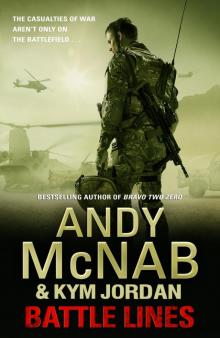 Battle Lines
Battle Lines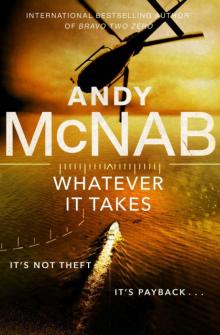 Whatever It Takes
Whatever It Takes The New Recruit
The New Recruit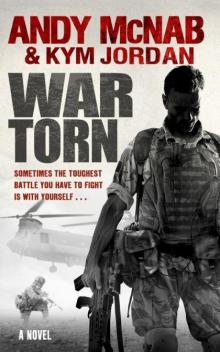 War Torn
War Torn Brute Force
Brute Force Crossfire
Crossfire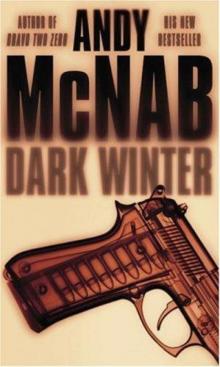 Dark Winter ns-6
Dark Winter ns-6 The Grey Man
The Grey Man Spoken from the Front
Spoken from the Front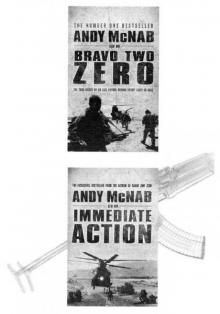 Meltdown
Meltdown Recoil
Recoil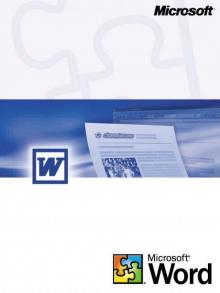 Nick Stone 1 - Remote Control.
Nick Stone 1 - Remote Control.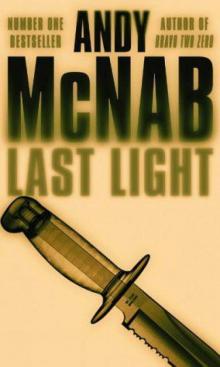 Last Light ns-4
Last Light ns-4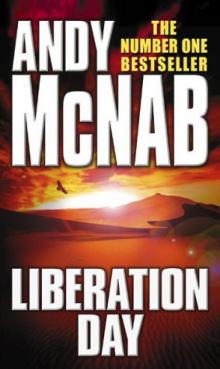 Liberation day
Liberation day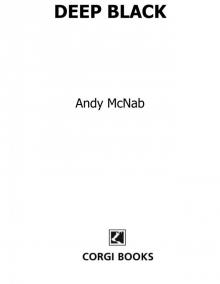 Deep Black
Deep Black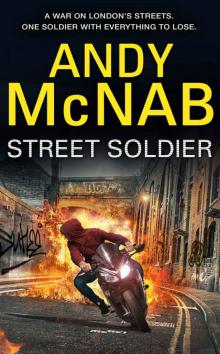 Street Soldier
Street Soldier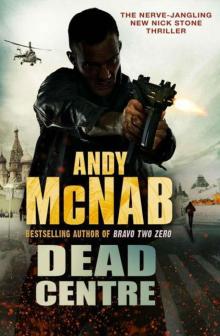 Dead Centre ns-14
Dead Centre ns-14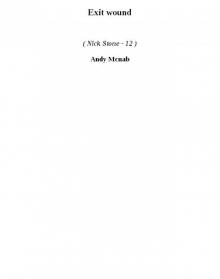 Exit wound ns-12
Exit wound ns-12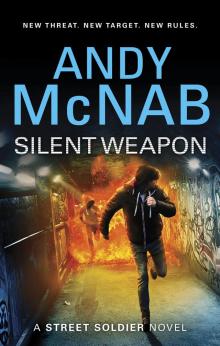 Silent Weapon
Silent Weapon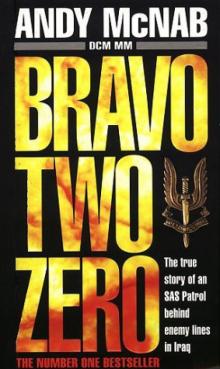 Bravo two zero
Bravo two zero Crisis Four ns-2
Crisis Four ns-2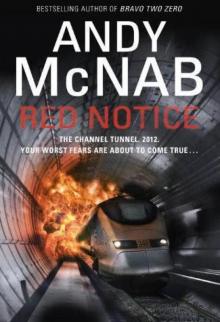 Red Notice
Red Notice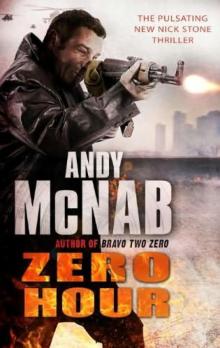 NS13 Zero Hour
NS13 Zero Hour Firewall
Firewall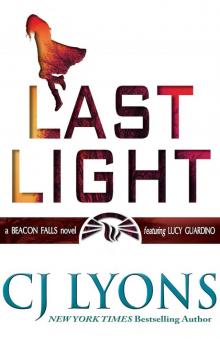 Last Light
Last Light Aggressor
Aggressor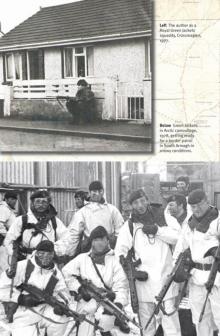 Seven Troop
Seven Troop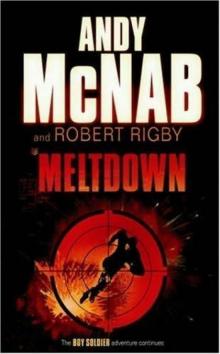 Meltdown bs-4
Meltdown bs-4 The Grey Man (quick reads)
The Grey Man (quick reads)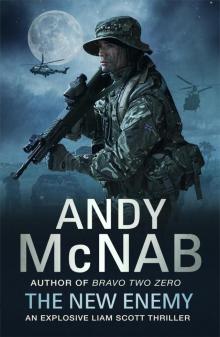 The New Enemy
The New Enemy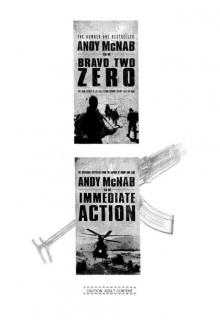 Avenger
Avenger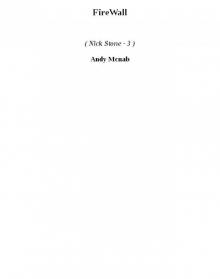 FireWall ns-3
FireWall ns-3 Silencer
Silencer Last Night-Another Soldier…
Last Night-Another Soldier…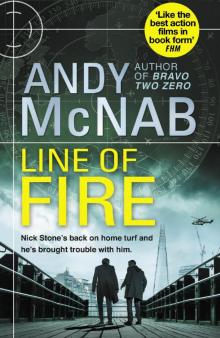 Line of Fire:
Line of Fire: Detonator
Detonator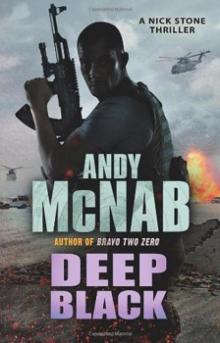 Deep Black ns-7
Deep Black ns-7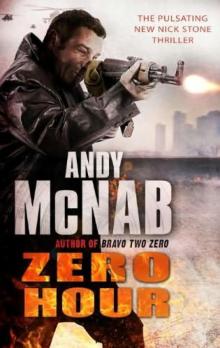 Zero Hour (2010) ns-13
Zero Hour (2010) ns-13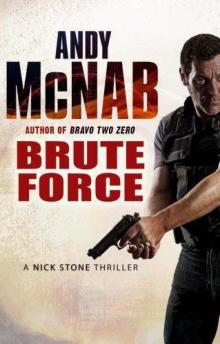 Brute Force ns-11
Brute Force ns-11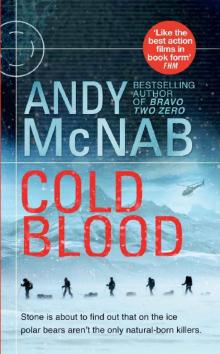 Cold Blood
Cold Blood Terminal Velocity
Terminal Velocity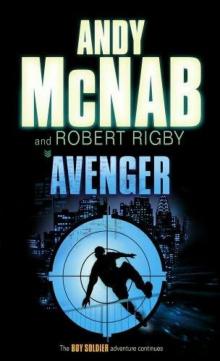 Avenger bs-3
Avenger bs-3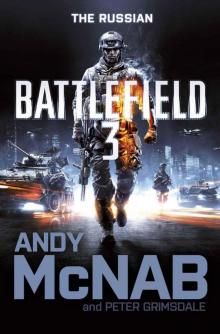 Battlefield 3: The Russian
Battlefield 3: The Russian DropZone
DropZone Zero Hour
Zero Hour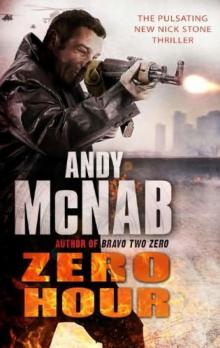 NS13 Zero Hour (2010)
NS13 Zero Hour (2010)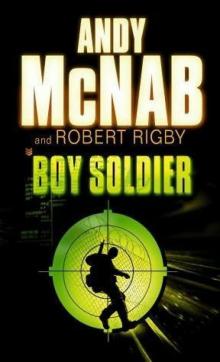 Boy soldier bs-1
Boy soldier bs-1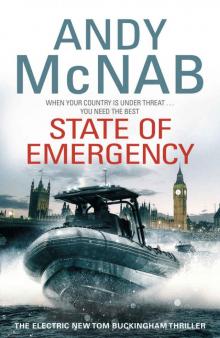 State Of Emergency: (Tom Buckingham Thriller 3)
State Of Emergency: (Tom Buckingham Thriller 3)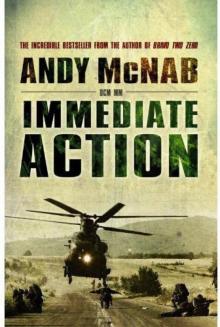 Immediate Action
Immediate Action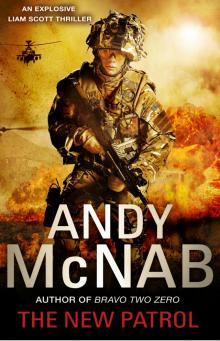 The New Patrol
The New Patrol Crisis Four
Crisis Four Boy Soldier
Boy Soldier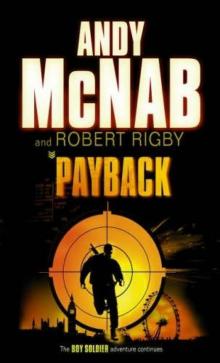 Payback bs-2
Payback bs-2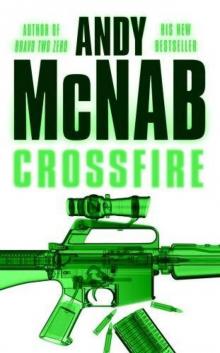 Crossfire ns-10
Crossfire ns-10 Today Everything Changes: Quick Read
Today Everything Changes: Quick Read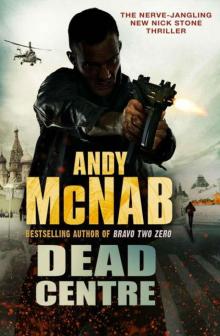 Dead Centre
Dead Centre For Valour
For Valour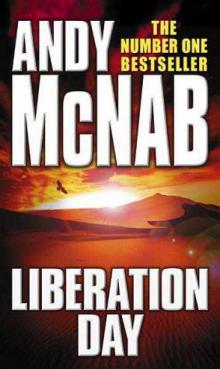 Liberation Day ns-5
Liberation Day ns-5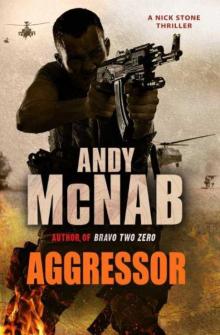 Aggressor ns-8
Aggressor ns-8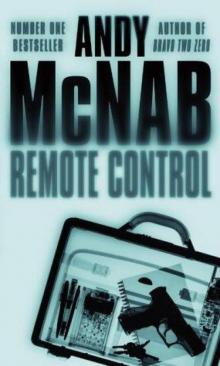 Remote Control ns-1
Remote Control ns-1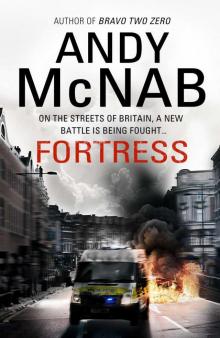 Fortress
Fortress On the Rock
On the Rock Dark Winter
Dark Winter